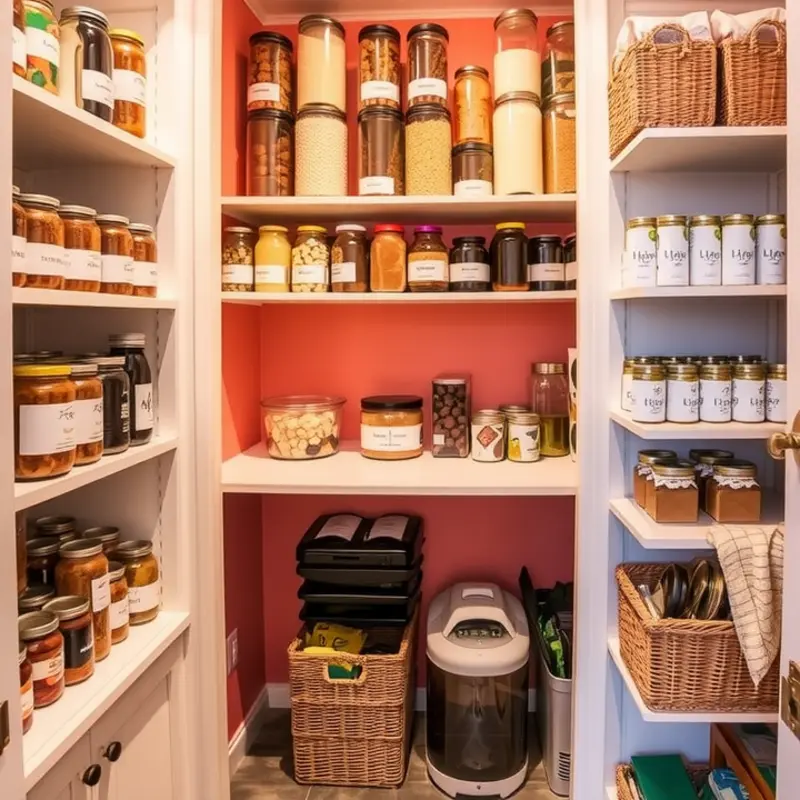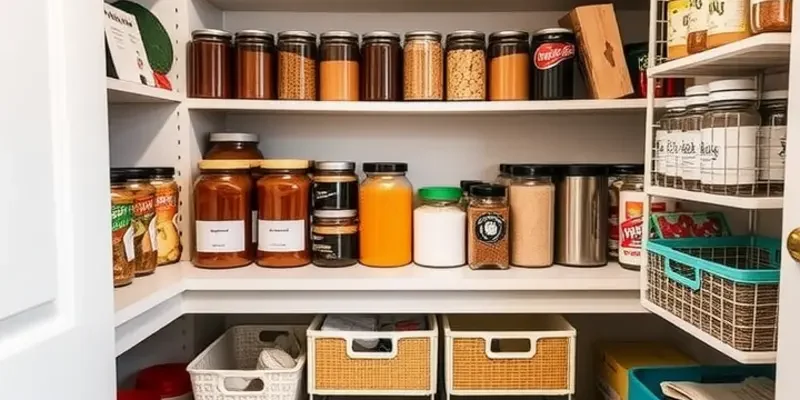Living in an apartment can feel like a juggling act, especially when it comes to food storage. Whether you’re a young renter, a duo of lovebirds, or a family trying to grocery-shop for everyone’s taste buds, the challenge of keeping your kitchen organized can feel like playing a game of Tetris. Half-full spice jars, an unruly assortment of leftovers, and a fridge that could double as a science experiment? We’ve all been there! This guide is here to ease the pain and help you navigate the culinary chaos that sometimes creeps into your cozy quarters. Get ready to balance your space like a pro and make every square inch of food storage a win. So grab your favorite snack (but don’t let it get lost in the abyss of your pantry), and let’s dive into some quirky yet effective solutions that will keep your food fresh and your sanity intact.
Maximizing Pantry Potential: Getting Creative

Apartment pantries often resemble mysterious black holes where food disappears, never to be seen again. Yet, with a few creative strategies, you can transform your pantry from chaotic to orderly. Small spaces demand smart solutions. Let’s delve into how you can utilize every inch of your pantry efficiently.
Start by taking stock of everything you have. Clear out all the items, categorize them into grains, snacks, canned goods, etc., and check expiry dates. Toss any expired items immediately. A practical inventory management system helps keep food fresh and prevents unnecessary purchases.
Visibility is key. Use transparent, stackable containers for bulk items such as rice, pasta, and cereals. Not only do they save space, but they also allow you to see what’s inside. Labels are your friend here—clear, bold tags for each container eliminate guessing and streamline your cooking process.
Take advantage of the vertical space inside your pantry. Install adjustable shelving to customize the height for taller bottles and shorter jars. Consider using wire racks on the back of the pantry door to store spices, oils, and condiments. This not only frees up shelf space but also makes it easier to locate frequently used items.
To maximize floor space, place large bins at the bottom to store bulky items. These bins can hold potatoes, onions, or even cleaning supplies, keeping them out of the way but easily accessible. Added dividers within the bins can further categorize the contents, helping in quick retrieval.
Use hanging baskets or hooks for items like garlic, bananas, or kitchen tools. This trick helps you use the top space efficiently, a major plus in small apartments. You can also use curtain rods within a pantry to hang utensils or even clip bags of snacks.
Door organizers are invaluable for small pantries. Use them to hold wraps and foils, freeing up drawer space elsewhere in your kitchen. Some models even come with pockets perfect for storing seasoning packets or tea.
Finally, establishing a regular cleaning schedule can prevent your pantry from descending into chaos again. Plan to conduct a quick audit monthly, rearranging and decluttering as necessary. This practice ensures that your space remains functional and your food remains fresh.
These tricks and tools can convert your pantry into an efficient, clear space. For more tips on transforming small apartment challenges into organized solutions, check out our detailed guide on apartment organization baskets.
Fridge Feng Shui: Keeping Your Cool

Mastering fridge organization in a small apartment can make a world of difference. It’s not just about aesthetics; it’s a skill that can enhance your cooking experience and reduce food waste. Transform your fridge into a realm of tranquility and efficiency with these simple yet effective hacks.
Start with the basics: temperature regulation. Ensure your fridge’s temperature is set between 35°F and 38°F. This range keeps your food fresh longer. Adjust the settings based on the season and the fullness of your fridge, as overcrowding can lead to uneven cooling.
Next, adopt the habit of zoning your fridge like a pro. Dedicate specific sections for different food types. For example, store raw meat and fish on the lower shelves where it’s coldest, and vegetables and herbs in the high-humidity drawer. This not only maximizes freshness but also prevents cross-contamination.
Clear storage bins are invaluable for sorting smaller items. Use them to consolidate similar products, like condiments or cheeses, into cohesive clusters. Label each bin with the items it contains for quick access. This system allows you to easily pull out entire bins, rather than hunting for individual items.
Consider the FIFO method—First In, First Out—by rotating your stock. When you buy new groceries, place older items in the front. This practice lets you consume food before it expires and keeps your fridge updated without forgotten leftovers lingering in the back.
Think about vertical storage. Utilize stackable containers with robust lids. They optimize space by allowing you to store more layers. For items like sauces or jams, consider installing small shelves that adhere to the fridge walls, increasing your surface area.
Don’t overlook the fridge door, a prime place for frequent-use items. Keep condiments, juices, and other frequently accessed items here. However, avoid placing eggs or milk in the door due to less stable temperatures.
For a touch of culinary flair, keep a fridge inventory list on the door. It can be a simple dry-erase board listing contents and expiry dates. This small hack boosts efficiency and means never buying the same product twice unnecessarily.
Finally, maintain cleanliness. Spills can lead to odors and mold, so wipe surfaces regularly. A clean fridge not only looks good but also ensures your food remains in optimal condition longer.
Enhance your living space further by exploring this guide on using baskets for apartment organization. With a few thoughtful strategies, your fridge can transition from a stress-inducing mess to a model of convenience and calm.
Final words
No one ever said living in an apartment would come with the royal treatment of a walk-in pantry or a sprawling kitchen. But with creativity, clever hacks, and a pinch of humor, you can absolutely craft a food storage experience that’s both functional and enjoyable. Remember, it’s all about finding methods that suit your lifestyle, whether you’re hosting a dinner party or just trying to find that last elusive taco seasoning. So roll up those sleeves and tackle that Tetris game we call food storage with a smile. Keep it fresh, keep it fun, and when in doubt, just store those extra snacks like they’re precious gold—because they basically are!









